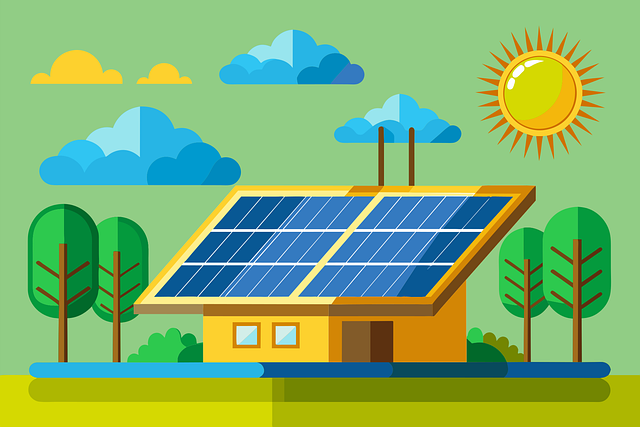“Maximize Your Energy Savings: Optimize Your Home for Solar Battery Installation!”
Optimizing your home for solar battery installation involves several key steps to ensure maximum efficiency and effectiveness of the system. First, assess your energy consumption patterns to determine the appropriate battery size and capacity needed to meet your needs. Next, evaluate your roof’s orientation, shading, and structural integrity to support solar panel installation, as these factors directly impact energy generation. Additionally, consider the electrical system’s compatibility with solar technology, including the inverter and wiring. Implementing energy-efficient practices and appliances can further enhance the benefits of solar batteries. Finally, consult with a professional installer to tailor the system to your specific requirements and local regulations, ensuring a seamless integration of solar energy into your home.
Assessing Your Home’s Energy Needs
When considering the installation of solar batteries in your home, the first crucial step is to assess your energy needs. Understanding your household’s energy consumption patterns is essential for determining the appropriate size and capacity of the solar battery system you will require. This assessment not only helps in selecting the right equipment but also ensures that you maximize the benefits of solar energy.
To begin, it is important to review your past electricity bills. By analyzing these documents, you can identify your average monthly energy consumption, which is typically measured in kilowatt-hours (kWh). This figure serves as a baseline for understanding how much energy your household uses on a daily basis. Additionally, consider any seasonal variations in your energy usage. For instance, if you use more electricity during the summer months due to air conditioning or during winter for heating, it is vital to account for these fluctuations when planning your solar battery installation.
Next, take a closer look at the appliances and devices in your home. Each item contributes to your overall energy consumption, and understanding their individual power requirements can provide valuable insights. For example, large appliances such as refrigerators, washing machines, and HVAC systems typically consume more energy than smaller devices like televisions or computers. By creating a list of your major appliances along with their wattage, you can calculate their total energy consumption and determine which devices you may want to prioritize for battery backup during power outages.
In addition to evaluating your current energy needs, it is also wise to consider any future changes that may impact your consumption. For instance, if you plan to purchase an electric vehicle or add new appliances, these additions will increase your energy requirements. By anticipating these changes, you can ensure that your solar battery system is adequately sized to accommodate your evolving needs.
Moreover, it is essential to assess your home’s energy efficiency. Implementing energy-saving measures can significantly reduce your overall consumption, allowing you to invest in a smaller solar battery system while still meeting your energy needs. Simple upgrades, such as installing LED lighting, improving insulation, or using energy-efficient appliances, can lead to substantial savings on your electricity bills. By enhancing your home’s energy efficiency, you not only lower your energy consumption but also increase the effectiveness of your solar battery system.
As you gather this information, it may be beneficial to consult with a professional solar energy provider. These experts can conduct a comprehensive energy audit of your home, providing insights that you may not have considered. They can help you understand how much energy you can realistically generate with solar panels and how much of that energy can be stored in batteries for later use. This collaboration can lead to a more tailored solution that meets your specific needs.
In conclusion, assessing your home’s energy needs is a foundational step in optimizing for solar battery installation. By analyzing your energy consumption patterns, evaluating your appliances, considering future changes, and improving energy efficiency, you can make informed decisions that will enhance the effectiveness of your solar battery system. This thorough assessment not only prepares you for a successful installation but also positions you to reap the long-term benefits of renewable energy, ultimately contributing to a more sustainable future.
Choosing the Right Solar Battery System

When considering the installation of a solar battery system, the first step is to choose the right solar battery that aligns with your energy needs and home setup. This decision is crucial, as it can significantly impact the efficiency and effectiveness of your solar energy system. To begin with, it is essential to assess your energy consumption patterns. By analyzing your electricity bills and understanding your daily energy usage, you can determine the capacity of the battery system that will best suit your household. This capacity is typically measured in kilowatt-hours (kWh), and it is vital to select a battery that can store enough energy to meet your needs during peak usage times, especially during outages or at night when solar panels are not generating electricity.
Once you have a clear understanding of your energy requirements, the next step is to explore the different types of solar batteries available on the market. Lithium-ion batteries are among the most popular choices due to their high energy density, longer lifespan, and decreasing costs. However, lead-acid batteries, while generally less expensive upfront, may require more maintenance and have a shorter lifespan. Therefore, it is important to weigh the pros and cons of each type, considering factors such as longevity, efficiency, and warranty terms. Additionally, some manufacturers offer hybrid systems that combine different battery technologies, which can provide a more tailored solution for your specific needs.
In addition to battery type, you should also consider the inverter system that will work in conjunction with your solar battery. The inverter is responsible for converting the direct current (DC) electricity generated by your solar panels into alternating current (AC) electricity that powers your home. Some solar battery systems come with integrated inverters, while others require separate units. It is crucial to ensure compatibility between your chosen battery and inverter, as this can affect the overall performance of your solar energy system. Consulting with a professional installer can provide valuable insights into the best configurations for your home.
Moreover, the location of your solar battery installation plays a significant role in optimizing its performance. Ideally, batteries should be installed in a cool, dry place to enhance their lifespan and efficiency. If you have limited indoor space, consider outdoor options that are weatherproof and secure. Additionally, proximity to your solar panels and electrical panel can minimize energy loss during transmission, further enhancing the system’s efficiency.
Furthermore, it is essential to evaluate the scalability of your chosen solar battery system. As your energy needs may change over time, selecting a system that allows for future expansion can save you from costly upgrades down the line. Some systems are designed to be modular, enabling you to add more batteries as your energy consumption increases or as your household grows.
Lastly, it is advisable to research and compare different brands and models of solar batteries. Look for customer reviews, expert opinions, and performance ratings to ensure you are making an informed decision. Additionally, consider the warranty and support offered by the manufacturer, as these factors can provide peace of mind and protection for your investment. By taking the time to carefully evaluate your options and consult with professionals, you can optimize your home for solar battery installation, ensuring a reliable and efficient energy solution for years to come.
Preparing Your Roof for Solar Panels
Preparing your roof for solar panels is a crucial step in optimizing your home for solar battery installation. The roof serves as the primary foundation for solar panels, and ensuring it is in optimal condition can significantly enhance the efficiency and longevity of your solar energy system. To begin with, it is essential to assess the current state of your roof. This involves checking for any signs of damage, such as missing shingles, leaks, or structural weaknesses. A roof in poor condition may not only hinder the installation process but could also lead to costly repairs in the future, especially once the solar panels are in place.
Once you have evaluated the condition of your roof, the next step is to determine its suitability for solar panel installation. Factors such as the roof’s age, material, and orientation play a significant role in this assessment. Ideally, roofs made of durable materials like metal or asphalt shingles are preferred, as they can support the weight of solar panels and withstand various weather conditions. Additionally, a roof that faces south or southwest is generally more advantageous, as it receives maximum sunlight throughout the day, thereby optimizing energy production.
If your roof is nearing the end of its lifespan, it may be wise to consider replacing it before installing solar panels. This proactive approach not only ensures that your solar system is installed on a solid foundation but also prevents the need for future removal and reinstallation of the panels for roof repairs. When selecting roofing materials, consider options that are both durable and energy-efficient, as these can further enhance the overall performance of your solar energy system.
In addition to assessing the roof’s condition and material, it is also important to evaluate the roof’s angle and shading. A roof with a steep pitch can be advantageous, as it allows for better sunlight exposure. However, if your roof is shaded by trees, chimneys, or other structures, it may significantly reduce the efficiency of your solar panels. In such cases, you might need to consider trimming back overhanging branches or even removing obstacles that block sunlight. This not only improves the performance of your solar panels but also contributes to the overall aesthetics of your home.
Moreover, it is essential to ensure that your roof has adequate structural support to handle the weight of the solar panels. Consulting with a structural engineer can provide valuable insights into whether your roof can support the additional load. If necessary, reinforcing the roof structure can prevent potential issues down the line and ensure a safe installation.
Finally, before proceeding with the installation, it is advisable to check local building codes and regulations regarding solar panel installations. Some areas may have specific requirements or restrictions that could impact your project. By familiarizing yourself with these regulations, you can avoid potential delays and ensure a smooth installation process.
In conclusion, preparing your roof for solar panels involves a comprehensive assessment of its condition, material, angle, and shading. By taking the time to address these factors, you can create an optimal environment for solar battery installation, ultimately leading to increased energy efficiency and long-term savings. With careful planning and consideration, your home can become a beacon of sustainable energy, contributing to a greener future while enhancing your property’s value.
Understanding Local Regulations and Incentives
When considering the installation of solar batteries in your home, understanding local regulations and incentives is a crucial first step. Each region has its own set of rules governing solar energy systems, and being informed about these can significantly impact both the feasibility and cost-effectiveness of your project. To begin with, it is essential to familiarize yourself with the zoning laws and building codes in your area. These regulations dictate where and how solar panels and batteries can be installed, ensuring that your system complies with safety standards and local ordinances. For instance, some municipalities may have restrictions on the height of solar installations or specific requirements for setbacks from property lines. Therefore, consulting your local planning department can provide clarity on these regulations and help you avoid potential fines or the need for costly modifications later on.
In addition to zoning laws, it is also important to investigate any permitting requirements that may apply to your solar battery installation. Many jurisdictions require homeowners to obtain permits before proceeding with installation, which often involves submitting detailed plans and specifications. This process can vary in complexity, so it is advisable to engage with a qualified solar installer who is familiar with local regulations. They can guide you through the permitting process, ensuring that all necessary documentation is submitted correctly and in a timely manner. This not only streamlines the installation process but also helps you avoid delays that could arise from regulatory issues.
Moreover, understanding the incentives available in your area can significantly enhance the financial viability of your solar battery project. Many states and local governments offer various incentives, such as tax credits, rebates, and grants, aimed at promoting renewable energy adoption. For example, the federal solar tax credit allows homeowners to deduct a percentage of the cost of their solar energy systems from their federal taxes. Additionally, some states have their own programs that provide further financial assistance, making solar battery installation more affordable. Researching these incentives can help you determine the total cost of your project and identify potential savings that can be reinvested into other home improvements or energy efficiency upgrades.
Furthermore, it is beneficial to stay informed about any changes in legislation that may affect solar energy incentives. As governments continue to evolve their energy policies, new programs may emerge, or existing ones may be modified. By keeping abreast of these developments, you can take advantage of opportunities that may arise, ensuring that your investment in solar technology remains financially sound. Engaging with local solar advocacy groups or online forums can also provide valuable insights into the latest regulatory changes and incentive programs.
In conclusion, optimizing your home for solar battery installation requires a thorough understanding of local regulations and available incentives. By familiarizing yourself with zoning laws, permitting requirements, and financial incentives, you can navigate the complexities of the installation process with confidence. This knowledge not only helps ensure compliance with local regulations but also maximizes the financial benefits of your investment in solar energy. Ultimately, being well-informed empowers you to make decisions that enhance your home’s energy efficiency while contributing to a more sustainable future.
Q&A
1. **What factors should I consider when choosing a location for solar battery installation?**
Consider proximity to solar panels, accessibility for maintenance, and protection from extreme weather conditions.
2. **How can I ensure my home’s electrical system is compatible with solar batteries?**
Have a licensed electrician assess your current electrical system and ensure it can handle the additional load and integration with solar technology.
3. **What is the ideal size of a solar battery for my home?**
The ideal size depends on your energy consumption, the capacity of your solar panels, and your backup power needs; conduct an energy audit to determine the right capacity.
4. **How can I improve energy efficiency before installing solar batteries?**
Upgrade insulation, seal leaks, use energy-efficient appliances, and implement smart home technology to reduce overall energy consumption.
Conclusion
To optimize your home for solar battery installation, assess your energy needs and consumption patterns, ensure your roof is suitable for solar panels, and consider the orientation and shading of your property. Upgrade your electrical system if necessary, choose the right battery size and type for your usage, and explore local incentives or rebates. Finally, consult with a professional installer to ensure proper integration and efficiency of the solar battery system. This comprehensive approach will enhance the performance and benefits of your solar energy setup.



